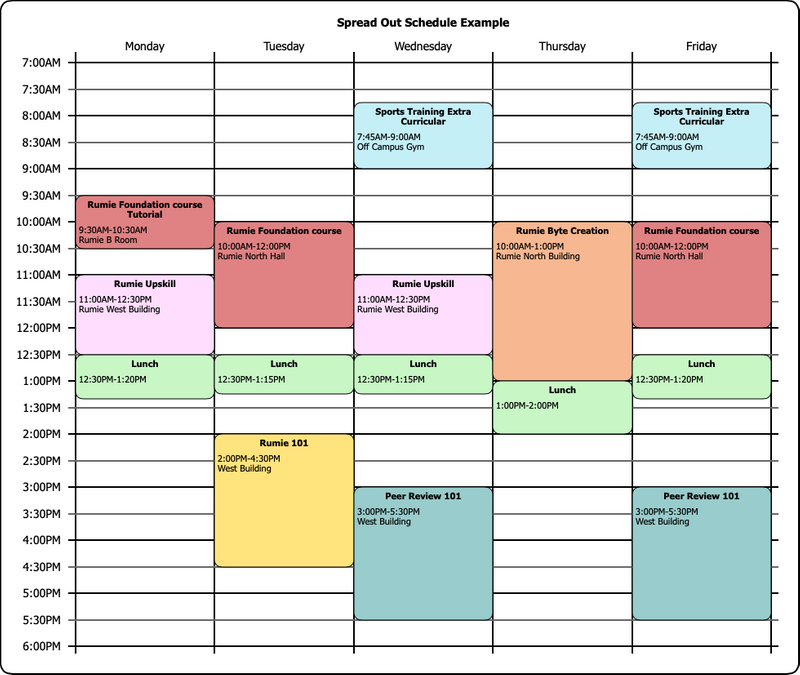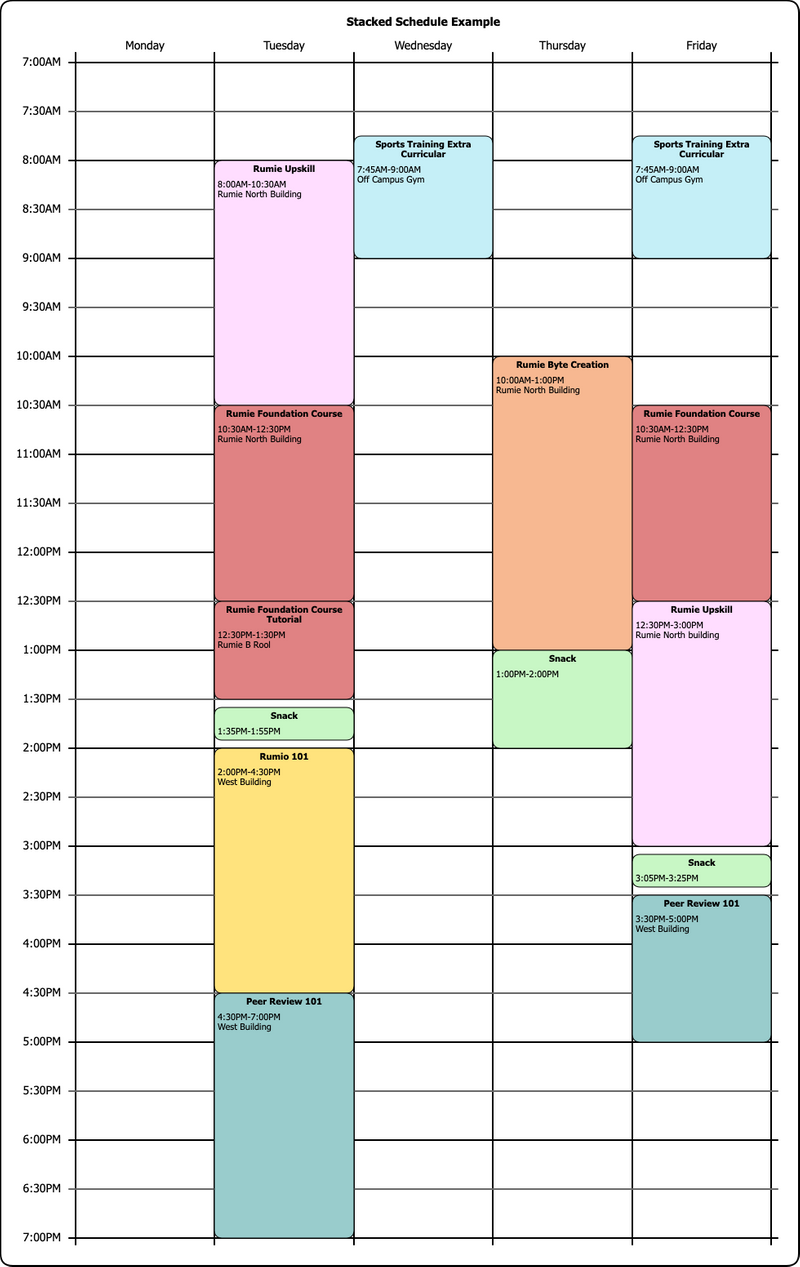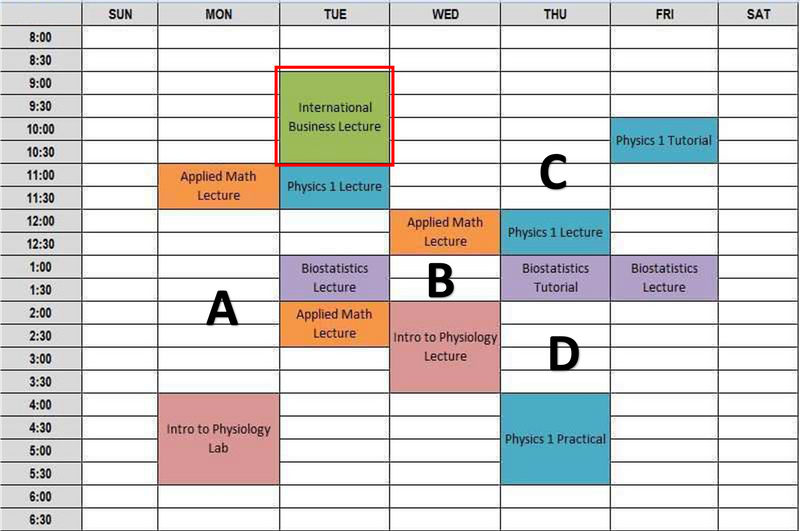
image
No matter what year of college you're in, the goal is to make it to graduation, one semester at a time. Right?
Each semester's class schedule gets you one step closer to your goal.
What's In An Ideal Class Schedule ?
 image
image
An Ideal class schedule:
Meets the academic requirements of your academic program/major and graduation
Has an average of 15 credits or 15 to 20 class hours per week
Keeps you on track for the next semester and a timely graduation
Has a balanced course load and difficulty level
Makes time for nonacademic tasks — commute, meals, rest, extracurricular activities
Dedicates 2-3 hours of study time for each hour of class time
Start With A Master Schedule
Know Your Courses!
Familiarize yourself with your academic program's requirements. Make a master list of courses for each semester all the way to graduation.
Include prerequisites and co-requirements in your master list. Overlooking a prerequisite or corequisite could complicate your schedule and delay your graduation.

Make a spreadsheet with courses.
Organize and categorize your courses into semesters and/or years, mandatory courses, electives, courses of interest, and backup courses — in case desired classes fill up quickly.

Research The Courses
Get the details!
Courses vary! Use the course website or handbook to get more details about courses' availability and complexity.

Details help you decide the ideal place on your schedule for each course. Mix and match to find a balance that's just right for you.

Details
course objectives
syllabus
professor
teaching methods
assessment criteria
when and how often it's offered
course requirements and prerequisites
location
duration of lecture
tutorials/labs/practical sessions
Scheduling Methods
Choose between an intense schedule with back-to-back lessons and a few days off or a more balanced schedule with classes spread throughout the week.
Balanced Schedule
Spreading out your courses makes the days more manageable.
Pros: balanced, smooth daily pace, a mix of long and short lessons, good for focus and retention
Cons: more days on campus, fewer long breaks, limited opportunity for part-time work

Intense Schedule
Stacked lessons are intense so they're not for everyone. You can stack your classes so that you get, mornings, evenings, or a few days free
Pros: large blocks of free time, part-time job possibility
Cons: back-to back-classes, requires high motivation and long focus, good time management, possibly many exams and assignment deadlines on the same day, higher risk of burnout, time lost catching up on sleep, short/no breaks between classes

Quiz
Kari works 3 days a week at the local bookstore. She wants to have all her courses on Tuesday and Wednesday, from 9am to 9pm, with a 45 minute lunch break. Which of these would make it IMPOSSIBLE for her to have this schedule?
Make Breaks Productive
Gaps between classes can be time gained or wasted.
Breaks longer than 60 minutes can be productive if you manage your time well. Avoid too many breaks shorter than 60 minutes. They eat away your time and it's harder to get much work done.

Mind the gap: Short Breaks
Good for small tasks — getting to next class, stretching, eating, bathroom break, checking mail
Bad for — going to the library, completing assignments, part-time job, doing research, catching up on lost sleep
Fill the gap: Long Breaks
Good for focus driven activities — research, assignments, group meetings, going to the library, catching up on sleep in the lounge
Bad for —waiting around for the next lesson
Always schedule time each day for eating and getting across campus to the next class.

Make A Preliminary Schedule
Make a tentative schedule before course registration opens.

Fill in 15-20 hours of class time — first the compulsory courses, then electives then backup courses, if needed
Leave time to move between classes and for a lunch break
Add academic and non-academic activities — study, rest, part-time job, meetings, etc.
Find the balance — move classes around to balance each day's workload
Get feedback from peers, seniors, advisors
Kari's Schedule
Kari has an International Business lecture on Tuesday morning from 9:00 to 11:00. Her advisor suggests moving it because it's too early and too far from the Physics class she has to attend at 11:00.

These are her options:
A: Monday afternoon between Applied Math (ending at noon) and Physiology (starting at 4:00)
B: Wednesday afternoon between Applied Math (ending at ending at 1:00) and Physiology (starting at 2:00)
C: Thursday morning at 10:00, before her Physics lecture at noon
D: Thursday afternoon between Biostatistics (ending at 2:00), and Physics (starting at 4:00)
Quiz
Refer to Kari's schedule. What's the best option for Kari to move the lecture?
Take Action
Invest some time in putting your class schedule masterpiece together!

Your feedback matters to us.
This Byte helped me better understand the topic.
